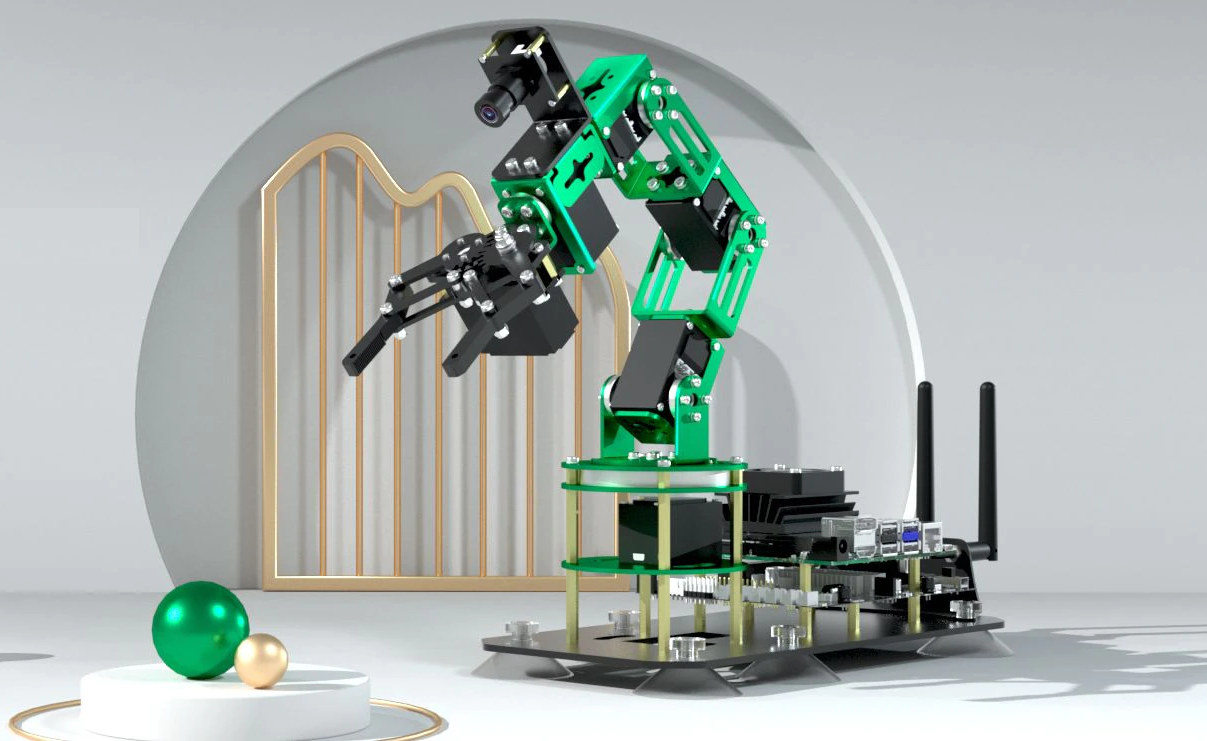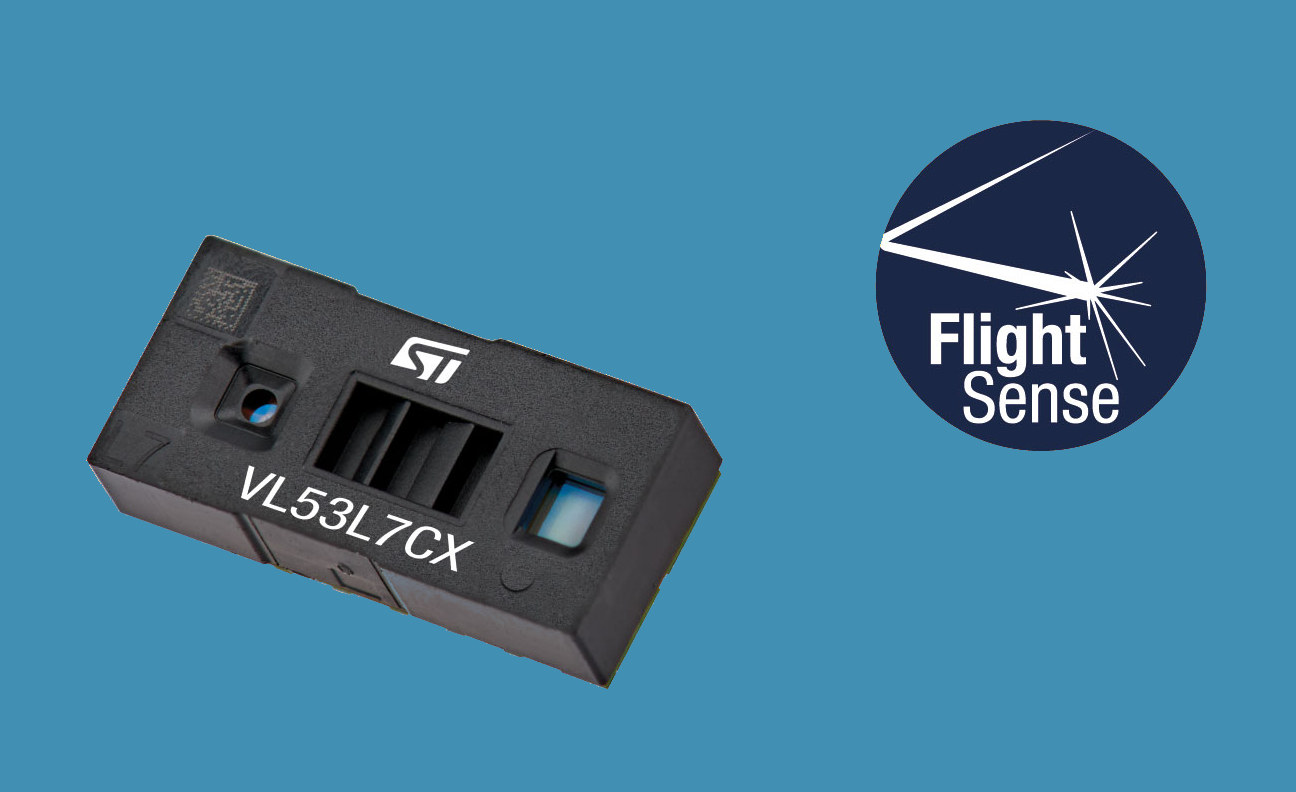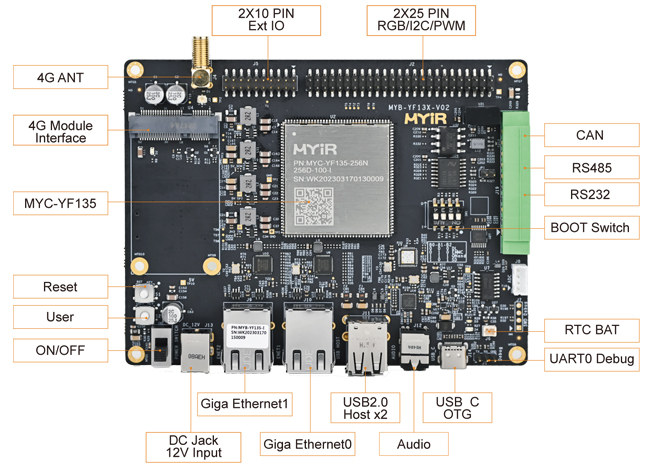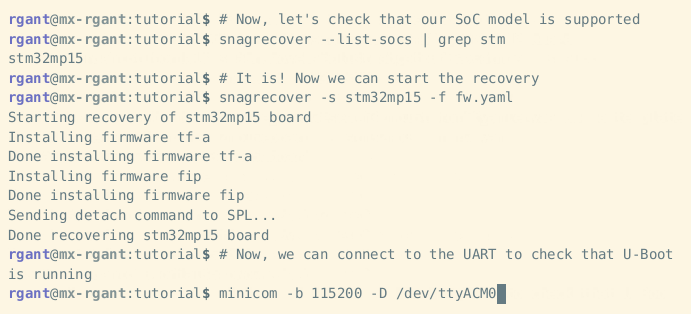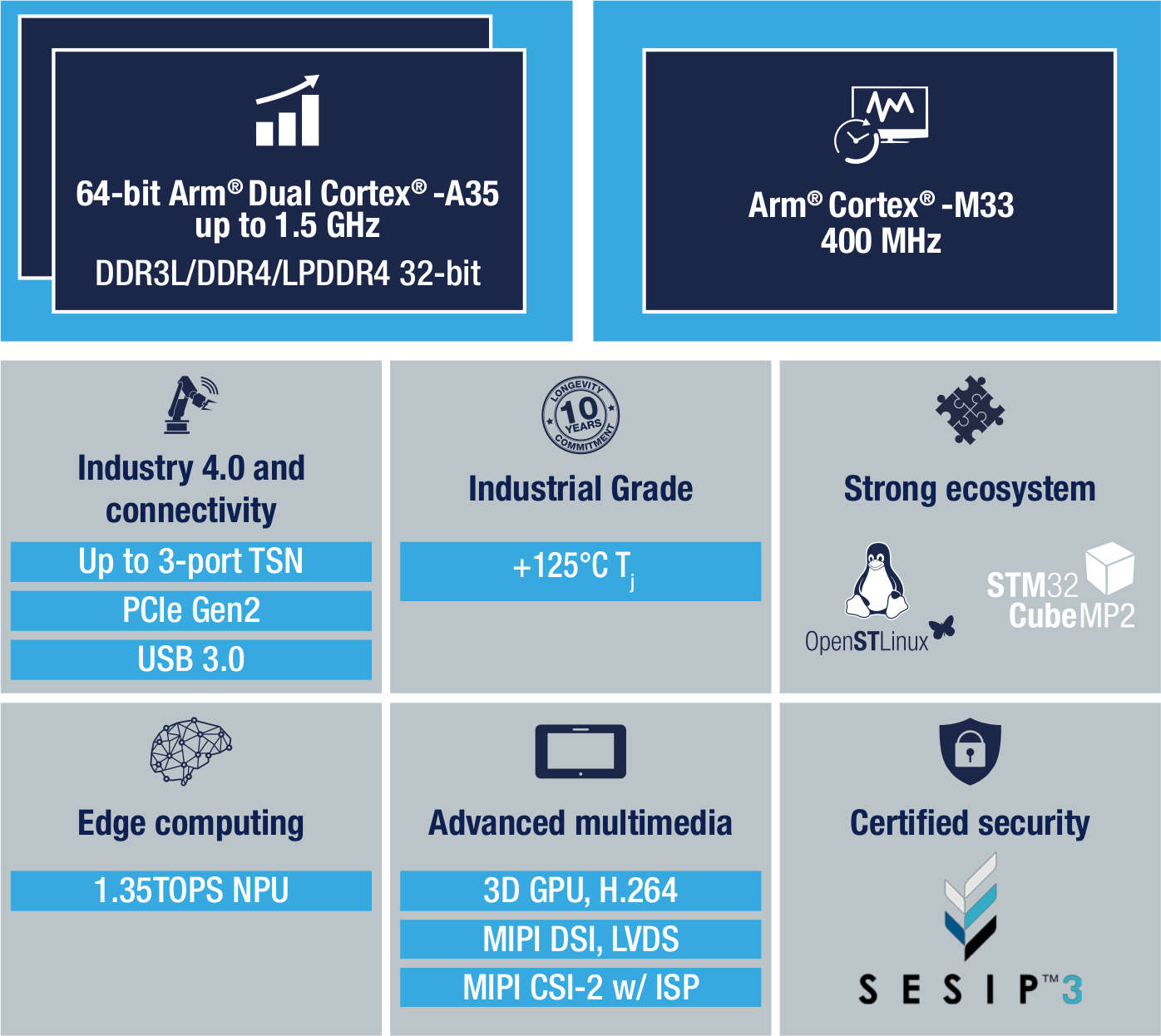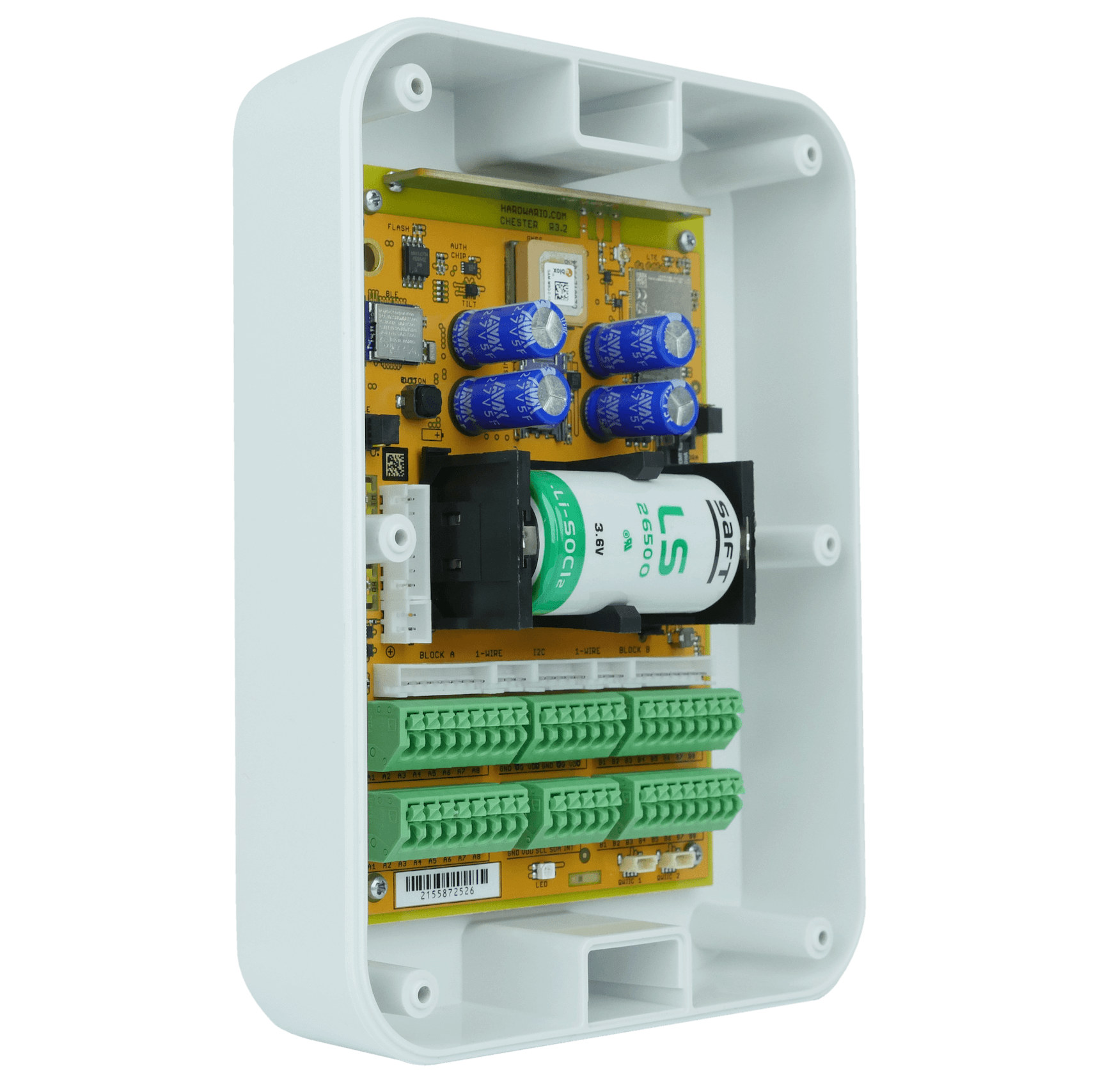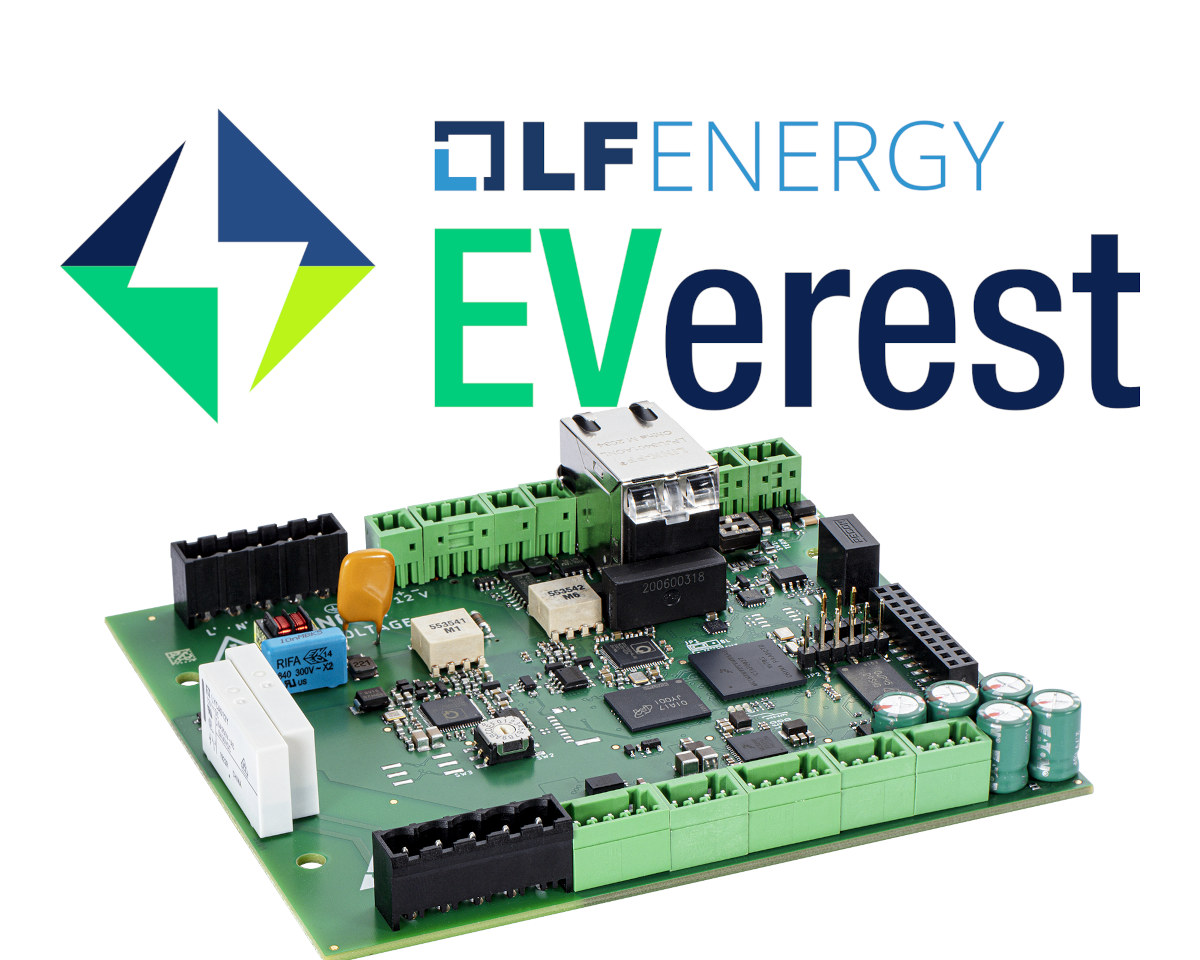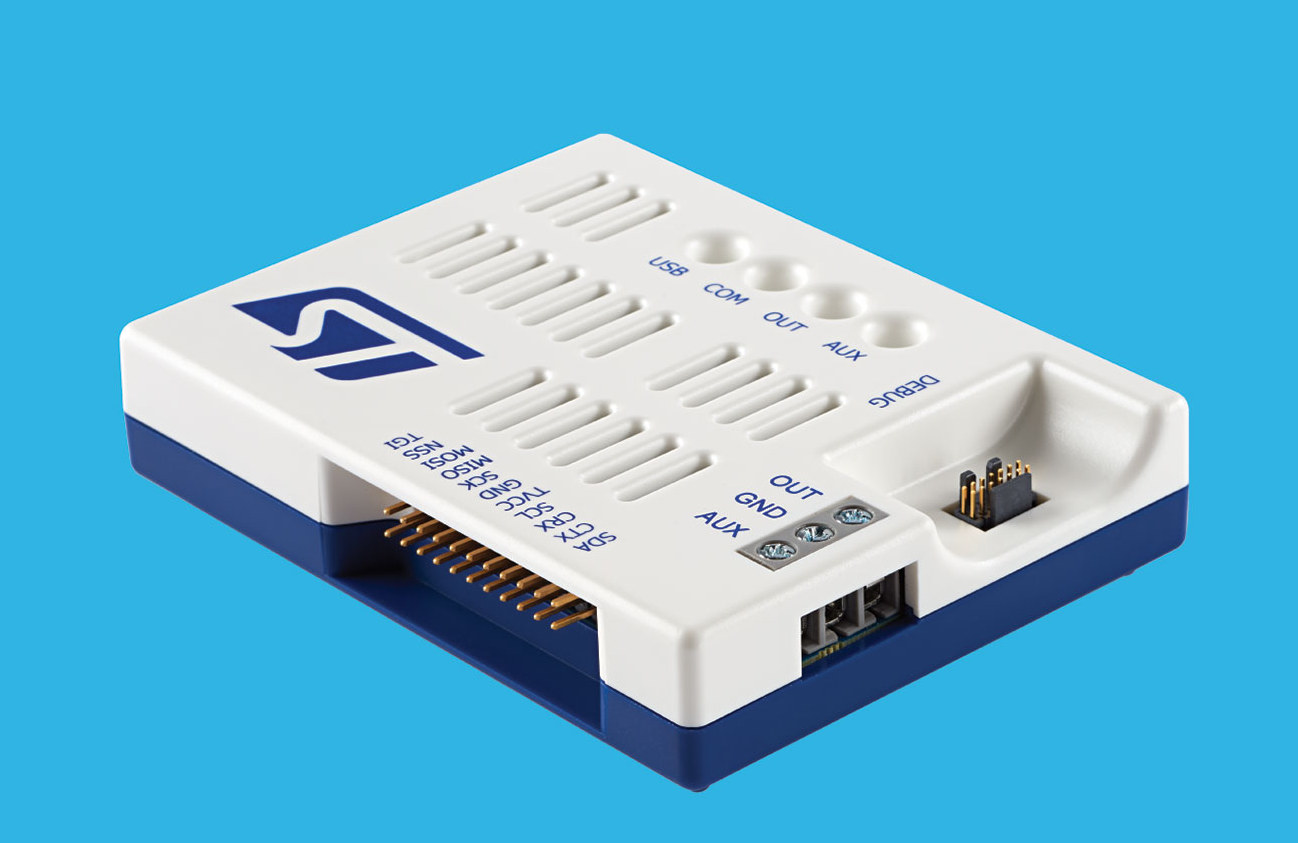Robotic arms can be expensive especially if you want one with AI Vision support, but Yahboom DOFBOT robotic arm designed for NVIDIA Jetson Nano offers a lower cost alternative as the 6 DoF robot arm sells for about $289 with a VGA camera, or $481 with the Jetson Nano SBC included. We previously published a review of the myCobot 280 Pi robotic arm from Elephant Robotics, and while it’s working well, supports computer vision through the Raspberry Pi, and is nicely packaged, it sells for around $800 and up depending on the accessories, and one reader complained the “price tag is still way too high for exploration“. The DOFBOT robotic arm is looking more like a DIY build, but its price may make it more suitable for education and hobbyists. DOFBOT robotic arm main components and specifications: SBC – NVIDIA Jetson Nano B01 developer kit recommended, but Raspberry Pi, Arduino, […]
VL53L7CX Time-of-Flight (ToF) sensor offers camera-like 90° field of view
STMicroelectronics VL53L7CX is the latest FlightSense multi-zone Time-of-Flight (ToF) distance sensor from the company with the main highlight between its camera-like 90° diagonal field of view, derived from a 60° x 60° field of view… This is a significant improvement over the 61° diagonal field of view of the previous generation ToF sensors such as the VL53L8 or VL53L5CP, and the wider field-of-view is said to bring “lifelike situational awareness” to applications like home automation, computers, house appliances, robots, and industrial equipment with full-privacy since ToF sensors do not capture photos or videos like traditional cameras. STMicro VL53L7CX key features and specifications: 940 nm invisible light vertical cavity surface emitting laser (VCSEL) and integrated analog driver 60° x 60° square field of view (FoV) (90° diagonal) using diffractive optical elements (DOE) on both transmitter and receiver enabling square FoV Receiving array of single photon avalanche diodes (SPADs) Multizone ranging output […]
Tiny STM32MP135 system-on-module comes with up to 512MB RAM, 256MB NAND flash or 4GB eMMC flash
MYiR Technology’s MYC-YF13X is a system-on-module powered by the latest STMicro STM32MP135 cost-optimized Cortex-A7 microprocessor with 256MB or 512MB DDR3L, 256MB NAND Flash or 4GB eMMC flash, and 32Kbit EEPROM. The new MYC-YF13X has the same 39x37mm stamp-size form factor as the company’s earlier MYC-YA15XC-T CPU module based on the STM32MP15 Cortex-A7 processor, and a development board is also provided with LCD and camera interfaces, dual Gigabit Ethernet, RS485/RS232/CAN bus interfaces, and more. MYC-YF13X specifications: SoC – STMicro STM32MP135 (STM32MP135DAF7) single-core Cortex-A7 processor up to @ 1 GHz Two configurations for memory and storage 256MB DDR3L, 256MB NAND Flash, 32KB EEPROM or 512MB DDR3L, 4GB eMMC Flash, 32KB EEPROM 148-pin stamp hole expansion interface (1.0mm pitch) Display I/F – RGB Interface Camera – Parallel camera Audio – 4x I2S, 2x SAI Networking – 2x RGMII interface USB – 2x USB 2.0 Up to 8x UART Up to 5x I2C Up […]
Snagboot is an open-source cross-vendor recovery tool for embedded targets
Bootlin has just released the Snagboot open-source recovery tool for embedded platforms designed to work with multiple vendors, and currently STMicro STM32MP1, Microchip SAMA5, NXP i.MX6/7/8, Texas Instruments AM335x and AM62x, and Allwinner “sunxi” processors are supported. Silicon vendors usually provide firmware flashing tools, some closed-source binaries, that only work with their hardware. So if you work on STM32MP1 you’d use STM32CubeProgrammer, while SAM-BA is the tool for Microchip processors, NXP i.MX SoC relies on UUU, and if you’ve ever worked on Allwinner processors you’re probably family with sunxi-fel. Bootlin aims to replace all those with the Snagboot recovery tool. The Python tool is comprised of two parts: snagrecover using vendor-specific ROM code mechanisms to initialize external RAM and run the bootloader (typically U-Boot) without modifying any non-volatile memories. snagflash communicates with the bootloader over USB to flash system images to non-volatile memories, using either DFU, USB Mass Storage, or […]
STMicro unveils STM32MP2 Arm Cortex-A35/M33 MPU family starting with STM32MP25
STMicro has introduced its second generation of its STM32 MPUs (microprocessors) with the STM32MP2 moving to a 64-bit Arm architecture with Edge AI acceleration, multimedia features, graphics processing, and digital connectivity targeting industrial and IoT edge applications. The new family follows the STM32MP1 Arm Cortex-A7/M4 series introduced in 2019, and the first member of the family is the STM32MP25 with up to two 1.5 GHz Cortex-A35 cores coupled with an Arm Cortex-M33 real-time core clocked at 400 MHz, a 3D GPU, and a 1.35 TOPS NPU for AI acceleration. STM32MP25 key features and specifications: CPU – Single or dual Arm Cortex-A35 cores running up to 1.5 GHz Real-time MCU – Arm Cortex-M33 core running up to 400 MHz GPU – Unnamed 3D GPU for “advanced HMI” with support for the Vulkan API VPU – H.264 hardware video decoder and encoder AI accelerator – 1.35 TOPS NPU (Neural processing unit) System […]
HARDWARIO CHESTER – A configurable Zephyr OS LPWAN IoT gateway with LoRaWAN, LTE IoT, GNSS connectivity
HARDWARIO CHESTER platform is a configurable LPWAN IoT gateway whose main function is to connect as many devices and environments as possible to the Internet using connectivity such as LoRaWAN, LTE Cat M1, or NB-IoT, as well as GNSS for geolocation. Contrary to most IoT gateways, it does not run Linux on an application processor, and instead, the “brain” of the CHESTER IoT gateway is a Raytac Bluetooth 5.0 module based on a Nordic Semi nRF52840 Arm Cortex-M4 microcontroller running Zephyr real-time operating system, which connects to LTE IoT modem and a LoRaWAN module through UART, and expansion modules through I2C, 1-wire, and GPIO interfaces. HARDWARIO CHESTER specifications: Wireless modules/chips Raytac MDBT50Q-P1MV2 Bluetooth 5.0 module based on Nordic Semi nRF52840 Arm Cortex-M4F MCU with 1MB Flash memory, 256kB RAM Nordic Semi nRF9160-SICA-B1A-R7 LTE-M/NB-IoT system-in-package (SiP) with Arm Cortex-M33 MCU, 1024 KB flash, 256 KB SRAM Murata CMWX1ZZABZ-078 LoRa module as […]
EVerest is an open-source software stack for car charging stations
EVerest is a software project initiated by PIONIX GmbH, but now part of the Linux Foundation’s LFEnergy initiative, whose primary goal is to develop and maintain an open-source software stack for EV charging infrastructure. EVerest supports multiple standards and it will run on any device from AC home chargers to public DC charging stations. I noticed the EVerest project in an upcoming talk at the Embedded Open Source Summit 2023 entitled ” EVerest: Electric Vehicle Chargers With Open Hardware and Software” and whose abstract reads in part: You will learn how to build your own electric vehicle charger using open hardware designs in combination with the EVerest open-source software stack for EV charging infrastructure. Following a quick introduction to EV charging technology, with explanations of the standards, protocols, and complexities involved, the talk will go into a deep dive into how you can build your own AC charging station. Reference […]
STMicro STLINK-V3PWR debugging & programming probe supports power measurement
STMicro STLINK-V3PWR is a new in-circuit debugging and programming probe made for STM32 microcontrollers and that is said to provide accurate power measurement. The probe is especially useful for battery power IoT and wireless applications and is able to measure current values from nanoamps up to ~500mA with up to ±0.5% accuracy. The STLINK-V3PWR can also power the target over a single USB cable up to 2A. STMicro STLINK-V3PWR key features and specifications: 1‑Quadrant source measurement unit: Programmable voltage source from 1.6 to 3.6 V Output current rating 500 mA with over-current protection (OCP) at 550 mA Programmable sampling rate from 1 SPS to 100 kSPS Dynamic measurement 100 nA to 550 mA current 160 nW to 1.65 W power measurements 50 kHz bandwidth 1.6 MHz acquisition / 2% accuracy Compatible with EEMBC ULPMark tests Auxiliary output voltage source from 1.6 to 3.6 V under up to 2 A (no current measurement, OCP at 2.5 A) Debugging of […]


